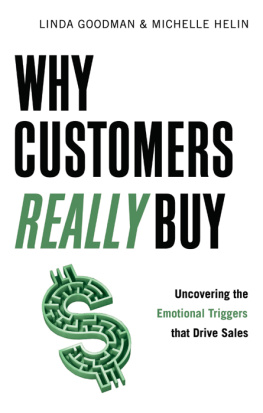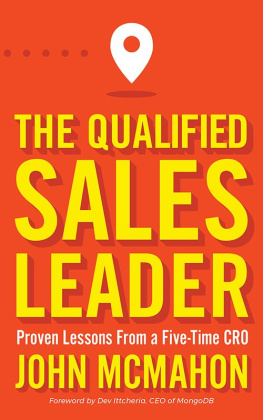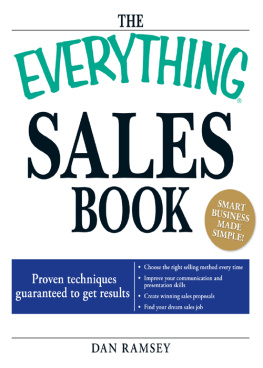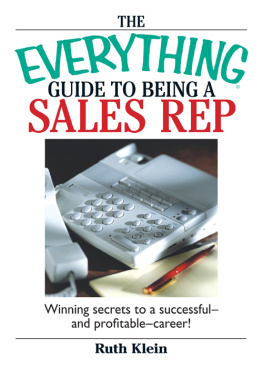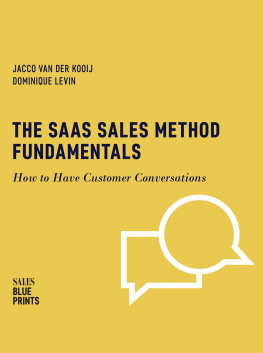
Copyright 2014 by Linda Richardson. All rights reserved. Except as permitted under the United States Copyright Act of 1976, no part of this publication may be reproduced or distributed in any form or by any means, or stored in a database or retrieval system, without the prior written permission of the publisher.
ISBN: 978-0-07-182495-8
MHID: 0-07-182495-2
The material in this eBook also appears in the print version of this title: ISBN: 978-0-07-182365-4, MHID: 0-07-182365-4.
eBook conversion by codeMantra
Version 1.0
All trademarks are trademarks of their respective owners. Rather than put a trademark symbol after every occurrence of a trademarked name, we use names in an editorial fashion only, and to the benefit of the trademark owner, with no intention of infringement of the trademark. Where such designations appear in this book, they have been printed with initial caps.
McGraw-Hill Education eBooks are available at special quantity discounts to use as premiums and sales promotions, or for use in corporate training programs. To contact a representative please visit the Contact Us page at www.mhprofessional.com.
TERMS OF USE
This is a copyrighted work and McGraw-Hill Education and its licensors reserve all rights in and to the work. Use of this work is subject to these terms. Except as permitted under the Copyright Act of 1976 and the right to store and retrieve one copy of the work, you may not decompile, disassemble, reverse engineer, reproduce, modify, create derivative works based upon, transmit, distribute, disseminate, sell, publish or sublicense the work or any part of it without McGraw-Hill Educations prior consent. You may use the work for your own noncommercial and personal use; any other use of the work is strictly prohibited. Your right to use the work may be terminated if you fail to comply with these terms.
THE WORK IS PROVIDED AS IS. McGRAW-HILL EDUCATION AND ITS LICENSORS MAKE NO GUARANTEES OR WARRANTIES AS TO THE ACCURACY, ADEQUACY OR COMPLETENESS OF OR RESULTS TO BE OBTAINED FROM USING THE WORK, INCLUDING ANY INFORMATION THAT CAN BE ACCESSED THROUGH THE WORK VIA HYPERLINK OR OTHERWISE, AND EXPRESSLY DISCLAIM ANY WARRANTY, EXPRESS OR IMPLIED, INCLUDING BUT NOT LIMITED TO IMPLIED WARRANTIES OF MERCHANTABILITY OR FITNESS FOR A PARTICULAR PURPOSE. McGraw-Hill Education and its licensors do not warrant or guarantee that the functions contained in the work will meet your requirements or that its operation will be uninterrupted or error free. Neither McGraw-Hill Education nor its licensors shall be liable to you or anyone else for any inaccuracy, error or omission, regardless of cause, in the work or for any damages resulting therefrom. McGraw-Hill Education has no responsibility for the content of any information accessed through the work. Under no circumstances shall McGraw-Hill Education and/or its licensors be liable for any indirect, incidental, special, punitive, consequential or similar damages that result from the use of or inability to use the work, even if any of them has been advised of the possibility of such damages. This limitation of liability shall apply to any claim or cause whatsoever whether such claim or cause arises in contract, tort or otherwise.
In memory of my beloved husband Paul, who gave so much more to my company than his name.
He inspired me to start and build Richardson and write all of my books. He remains my strength.
Contents
Foreword
Theres no better way to learn about people in depthto get to know their every move, to understand how they think, or to predict what they will do nextthan to compete against them. For many years, and with dozens of prospective clients, Linda Richardson and I were fierce competitors. Often from an initial list of eight or so contenders, she and I were almost always the last two standing. Whenever I heard that she was one of the finalists for a project where I was in the running, I knew that it would be tough; whenever she wasnt on the list I breathed a sigh of relief. We regarded each other with that unique combination of respect and visceral competitiveness that salespeople everywhere reserve for the one competitor who keeps them up at night. After a competitive sale, when I did a winloss analysis, the feedback from clients was depressingly similar: Linda Richardson is creative, shes smart, she knows what shes talking about, she has new ideas, she thinks. By definition, of course, clients are always right, so all I could do was hope that once in a while they might add, but you do all that too, and better.
In the days when we were first going head to head against each other, there wasnt a lot of creativity or new thinking happening amongst sales training vendors. The average competitor offered the standard range of techniques that today seem so simplistic: objection handling, features and benefits, open and closed questions, and, of course, closing techniques. These ideas had been minimally repackaged from the early work of writers such as E. K. Strong in the 1920s. Fifty years later they were looking distinctly tired. Linda was one of the first people in the sales training world to realize that the old ideas were not enough. Coming from very different backgrounds, she and I were amongst the early innovators in the field who recognized that the new selling was about solutions, not about products; it was about needs, not about features.
This new thinking, variously called Consultative Selling, Solutions Selling, and Client-Centered Selling, was to change the sales world. It was a major step forward in terms of sophistication. Clients, not products, became the center of the sales effort. Opening durable, long-term relationships replaced the old focus on closing one-off deals. Understanding clients became more important than persuading them. We were enthusiastic missionaries for the new selling, and each of us was able to document some dramatic changes in sales performance in the companies that implemented our ideas. We read each others works and learned from each other, gratefully.
Bit by bit, company by company, the new client needbased selling moved from being a revolutionary challenge to becoming the established wisdom. Nobody today would think of going back to the simplistic and manipulative techniques that dominated selling before the consultative revolution.
In a curious kind of way, history is now repeating itself. The sales revolution, which Linda played such an important role in popularizing, is itself under attack from new concepts, new technologies, and new client demands. The ideas that originally put her in the fore-front of fresh thinking are themselves starting to look tired. Most people would decide that this would be a good time to bow out, having made their decisive contribution. But Linda Richardson, as her best-in-class clients will tell you, is not most people. Over the years, she has consistently renewed herself and evolved her thinking. She has remained at the cutting edge of selling, as her new book, Changing the Sales Conversation, so clearly shows. This is no mean feat. Selling is now changing more profoundly and more quickly than it has at any time in history.
There seems to be general agreement on what is driving these changes. One clear factor is the rising power of the client. Armed with sophisticated purchasing techniques and given more vendor choices than ever before, clients are not only in the drivers seat but also commandeering turbocharged juggernauts with sufficient power to crush all but the strongest and most skilled providers. The Internet has given clients omniscient access to information about their available choices. We are in a world where
Next page

